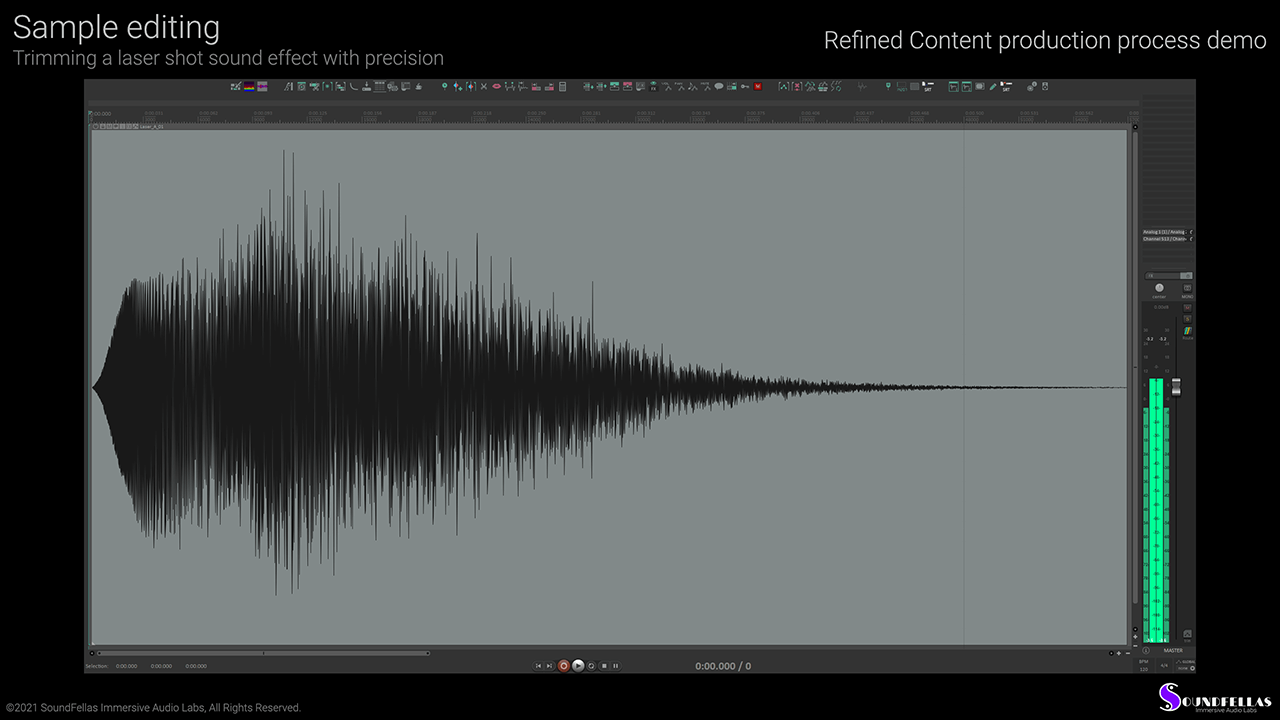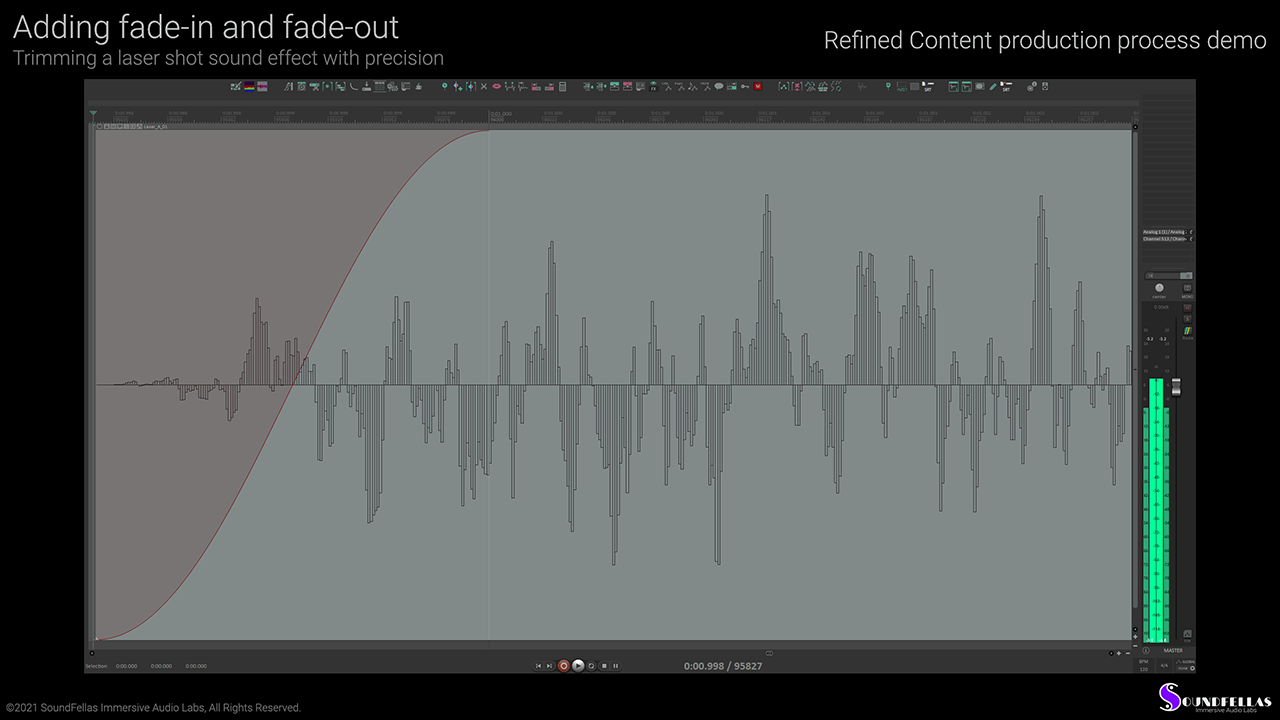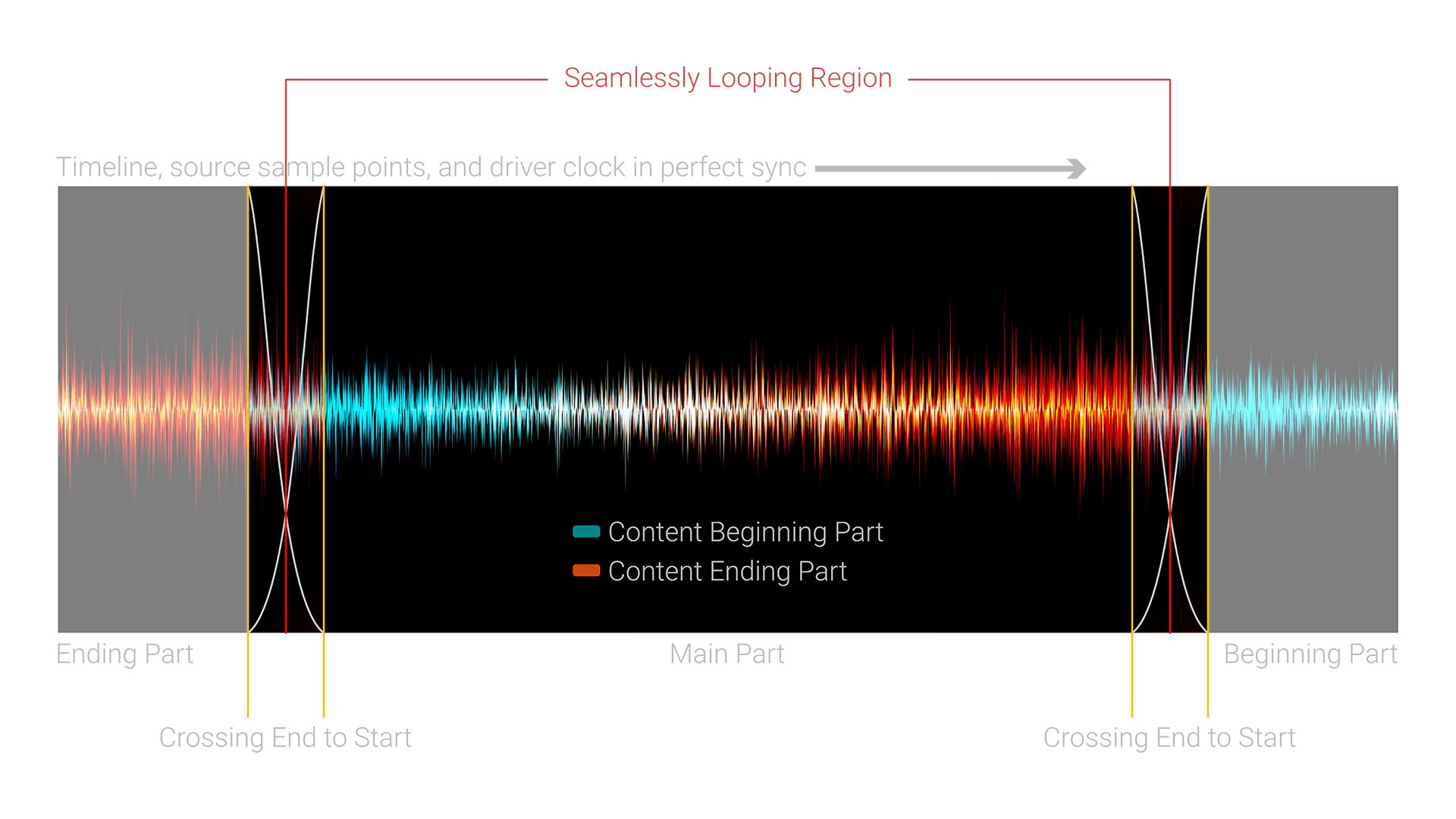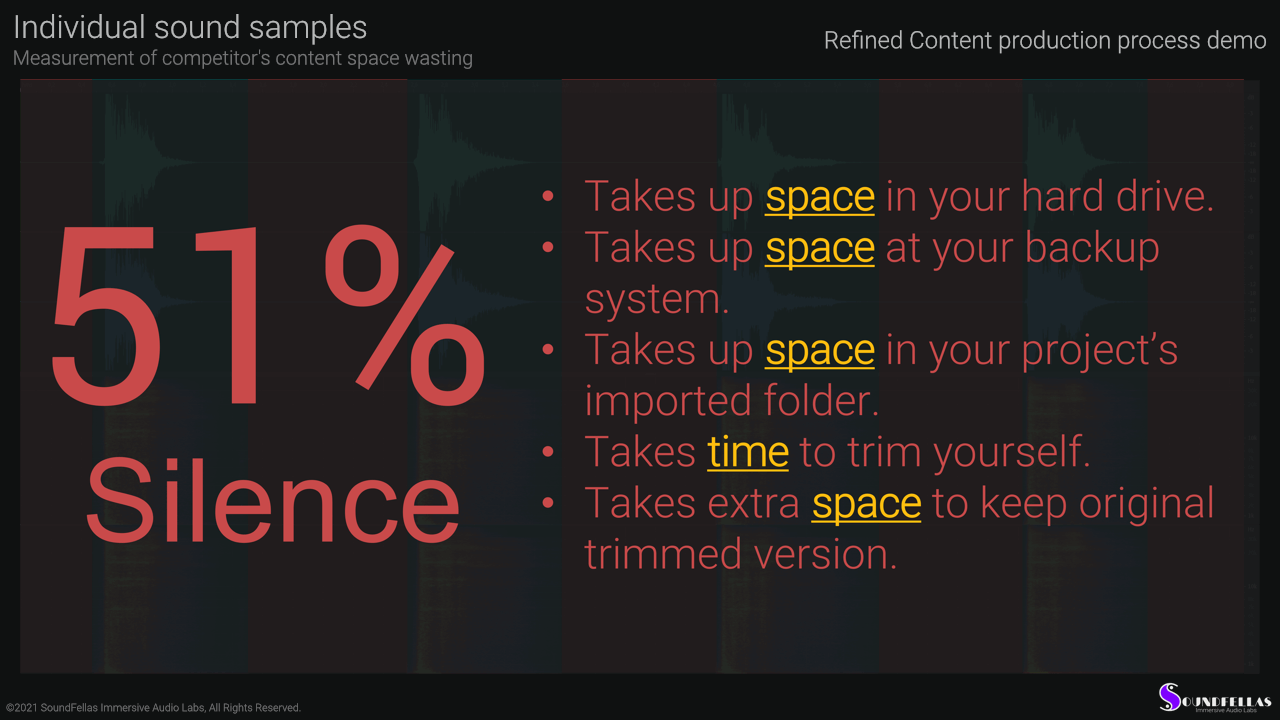
Refined Content
Meticulous trimming, seamless looping, and detailed fading. All those results in oneshots that perfectly sync with visuals, and loops that cycle seamlessly in any playback scenario. What you get is content that just sounds great and cuts through the mix.




